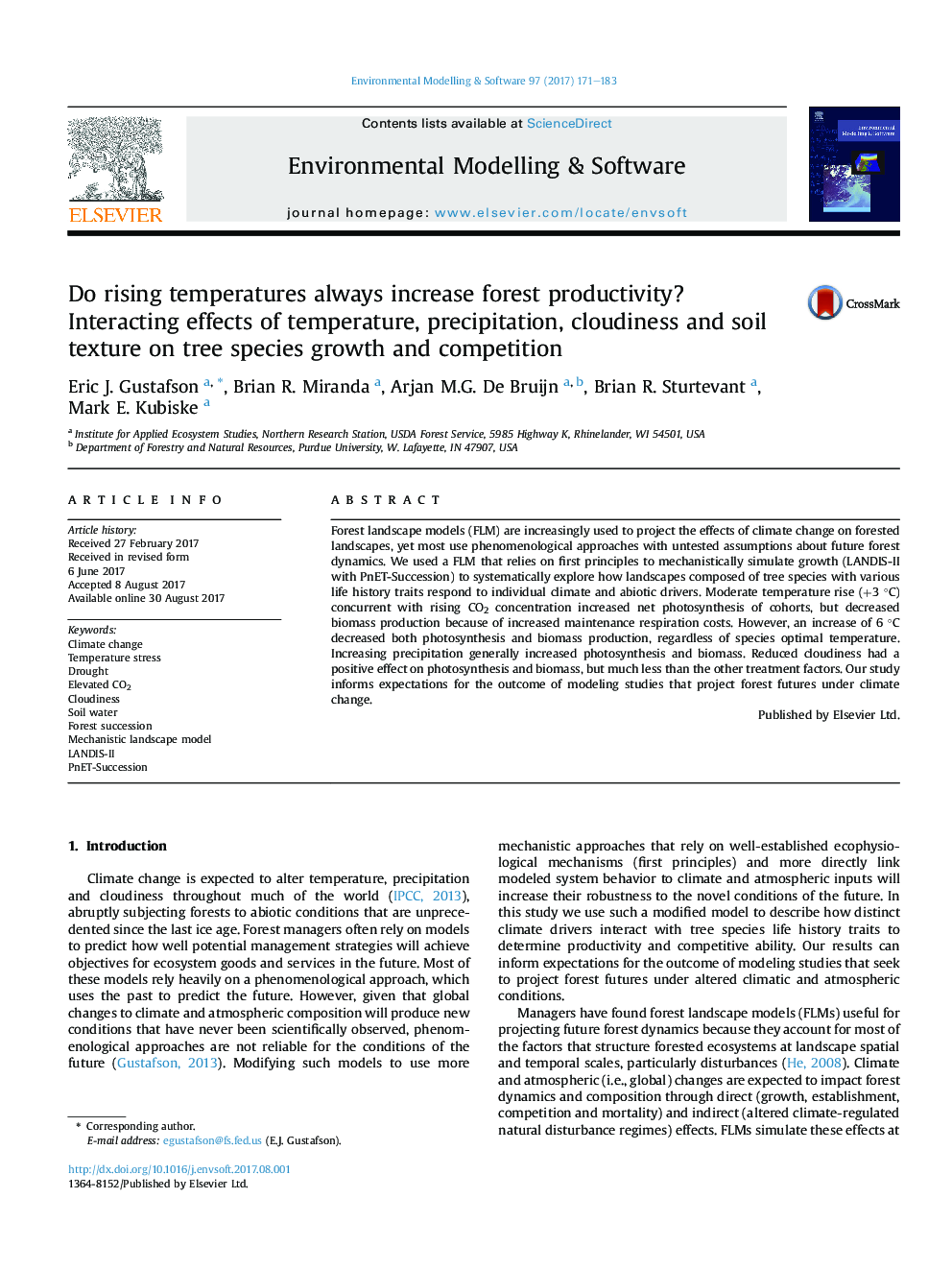| کد مقاله | کد نشریه | سال انتشار | مقاله انگلیسی | نسخه تمام متن |
|---|---|---|---|---|
| 4978059 | 1452253 | 2017 | 13 صفحه PDF | دانلود رایگان |
- We used the LANDIS-II forest landscape model to reduce uncertainty about the effects and interactions of individual climate and atmospheric drivers on forest growth, competition and succession. Our paper also informs expectations for simulation modeling studies that seek to project the impacts of altered climate and CO2 concentrations on forest dynamics.
- Elevated temperatures should not be expected to enhance productivity unless the temperature increase is modest, or unless precipitation also increases dramatically.
- Longer growing seasons and reduced stomatal conductance associated with increasing CO2 concentrations may be not sufficient to offset the increased respiration caused by elevated temperatures.
- Competition for water is the major factor driving competitive outcomes and forest succession under climate change.
- Carbon reserves are also reduced with elevated temperature, and although increased precipitation may mitigate this decline, increased precipitation may not be enough to reduce mortality rate under elevated temperatures.
Forest landscape models (FLM) are increasingly used to project the effects of climate change on forested landscapes, yet most use phenomenological approaches with untested assumptions about future forest dynamics. We used a FLM that relies on first principles to mechanistically simulate growth (LANDIS-II with PnET-Succession) to systematically explore how landscapes composed of tree species with various life history traits respond to individual climate and abiotic drivers. Moderate temperature rise (+3 °C) concurrent with rising CO2 concentration increased net photosynthesis of cohorts, but decreased biomass production because of increased maintenance respiration costs. However, an increase of 6 °C decreased both photosynthesis and biomass production, regardless of species optimal temperature. Increasing precipitation generally increased photosynthesis and biomass. Reduced cloudiness had a positive effect on photosynthesis and biomass, but much less than the other treatment factors. Our study informs expectations for the outcome of modeling studies that project forest futures under climate change.
Journal: Environmental Modelling & Software - Volume 97, November 2017, Pages 171-183
